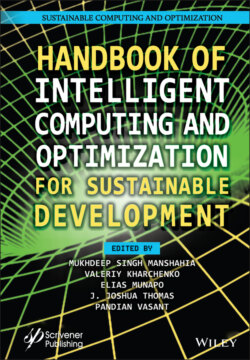Читать книгу Handbook of Intelligent Computing and Optimization for Sustainable Development - Группа авторов - Страница 60
2.5.2.1 Construction of Enzyme-Free DNA Logic Gate
ОглавлениеThe gate formation methodology proposed in the paper [8] is dependent on DNA strand displacement mediated by toehold domains; thus, hybridization as well as denaturation of the involved strands plays the crucial part. The DNA gate structurally comprises of two parts: one or more gate strands and single-output signal in form of DNA oligonucleotide. The output strand from a gate structure either is used as the input strand to a downstream gate or is tagged with fluorophore for reading out the output signal. Either both the ends and only one end of the output strand can be attached to the proposed gate complex. In the projected experiment, the binary digits “0” and “1” are represented by low and high concentration, respectively.
Figure 2.18 Toehold-mediated DNA branch migration and strand displacement [7].
Figure 2.19 shows the schematic representation of two-input AND gate. Initially, the gate complex is partially double-stranded DNA sequence and inert. The complex consists of three strands, viz., Eout (57 bases long), F (60 bases long) and G (36 bases long). The three toehold binding regions, each of which is 6 bases long, are colored in Figure 2.19. One toe-hold binding region is at the 3’ end of G, the second one is in Eout and the third one is inside the sequence F. The computation is initiated after adding input oligonucleotides to the solution containing the gate complex. Gin and Fin are the two inputs which are 36 bases long and complementary sequences G and F respectively within the gate complex. At first, the input Gin binds to its corresponding toehold in G at the 3’ end of the gate complex and displaces G by branch migration. It produces an inert partially double-stranded waste product consists of Eout and F. The waste product contains an exposed toehold in F for the subsequent input sequence Fin. Similarly, Fin binds to the toehold and displaces F and produces Eout as the output sequence which contains a toehold and can be used as the input signal for the downstream gate. Hence, we can say for this two-input AND gate, if and only if both of the input DNA strands are present then only output DNA strand gets generated.
Figure 2.19 Mechanism of two-input AND gate.
The output signal generated from a logic gate has a tendency to interact further with downstream gates before its release which is undesirable. To avoid such interaction, the toehold binding domain of output strands need to be protected. This can be achieved by constructing logic circuit using one AND gate and two translator gates. A translator gate can be defined as single-input AND gate that coverts the input signal to the output signal, all encoded in form of DNA oligonucleotides.
A three-translator gate chemical circuit is constructed for logical OR gate operation. Two of those three gates receive the input strands and releases the same output strands. Then, the remaining strand receives such output strand to release final output strand of the gate. Thus, following this method, the output strand of the OR gate becomes free if and only if at least one input strand is present.
NOT gates, containing single translator gate and single inverter strand, are restricted to the first layer of the proposed circuit. The presence or absence of a single-input strand denotes a Boolean value. The inverter strand should be added with the input simultaneously. If the input strand is absent, the inverter strand activates the translator gate to release an output signal. But the presence of the input strand acts as a competitive inhibitor and preferably anneals with the inverter strand and thus the translator gate cannot be activated.
